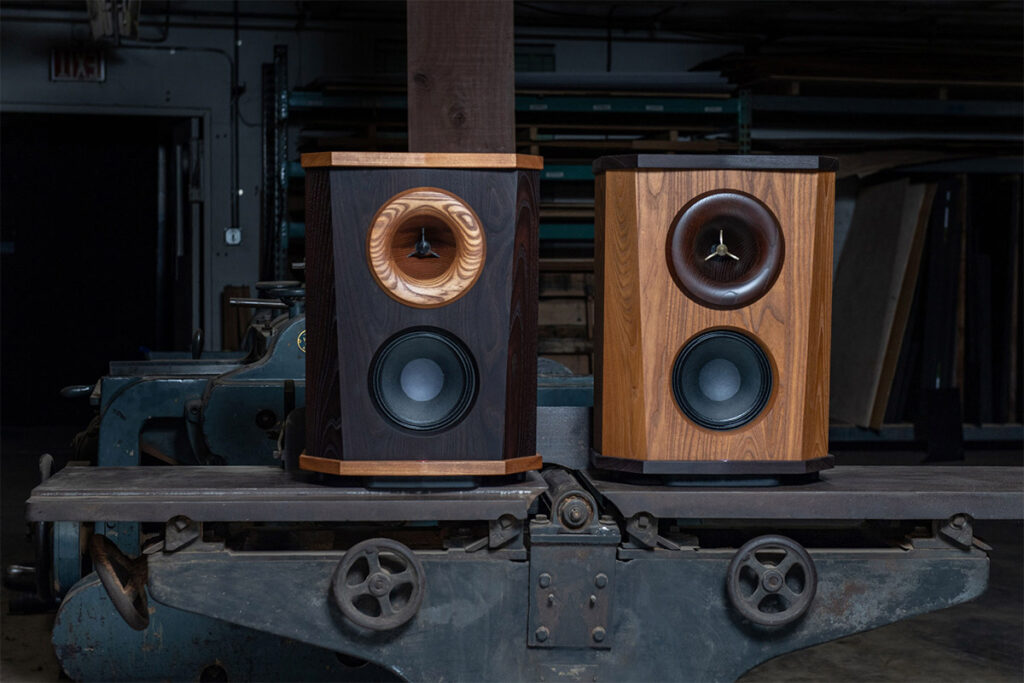Transparent clarity, deep bass, and “Invisible Sound” from German audio company ADS. Background: One of the lesser known hi-fi brands of the ’70s, ADS (Analog and Digital Systems) […]
Music is an event, not a soundtrack… Advancing Sound Reproduction with Oswalds Mill Audio

Background
When Jonathan Weiss first laid eyes on the old stone Oswalds Mill building in the wilds outside of Allentown, Pennsylvania in New Tripoli, he knew it was the perfect location to create his dream sound factory. Built in the early 1800’s, the loft-like, four-story open structure contained more than 10,000 square feet of workspace and had thick stone walls.
There were no immediate neighbors, so the spot was secluded enough to make as much noise as he would need to set up shop. So after buying the building in 1998, Oswalds Mill Audio (OMA) was born. Weiss wasn’t setting out to construct just another stereo equipment factory. Instead, this would become his high fidelity sound laboratory — the Willy Wonka’s Chocolate Factory of stereophonic sound design and manufacturing.
His mantra? “Music is an event, not a soundtrack.” And at ISC Hi-Fi, we couldn’t agree more.

Size/Construction
Bridging vintage audio technology with the latest engineering techniques, Weiss relied on his own sound philosophy of old world craftsmanship to realize his innovative high end audio speakers, amplifiers, turntables and stereo furniture. Many characteristics set OMA apart from other brands making state-of-the-art audio gear today, but what makes this brand special is the outstanding acoustic performance of their uniquely designed cone-shaped horn speakers.

Using a special process, OMA thermally changes the nature of their wood by roasting it — akin to making coffee beans. This heat exposure changes the chemical structure and organic properties of the wood, making it more stable and a better conduit for the sound waves traveling out of it. Weiss’ design features “conical horns with straight walls” which allows soundwaves to travel directly to the listener (as opposed to conventionally-designed curved tube speakers that dissipate sound). This innovation minimizes distortion and allows for a more accurate, uncolored soundfield.
The directivity of the horn is also crucial: there’s no encumbrance when waves exit the driver. With less constriction, the speakers are far more efficient. Weiss likens this effect to a megaphone.

“The conical shape allows the sound to go where you want it to go, and you don’t have to shout. With a box speaker design you will have to shout or, put another way, crank the volume up unnecessarily. It’s all about efficiency,” he says.
The details are fantastic. OMA’s are ported two different ways: from underneath or the front. This allows the listener to be able to virtually place the speakers anywhere. Sure, every room has different dimensional configurations, which will inevitably result in acoustic challenges. But it’s nice to know that wherever you put these speakers you’ll be pleased with how they sound.
Sound
Weiss’ passion stems from his time spent working at a theater when he was 14. He could never get over the sound emanating from the 2-meter-tall, horn-loaded Altec loudpeakers, which were powered by vintage tube amplifiers that projected sound over the cavernous auditorium. There was a directness and purity to it, he told me.
Volume seemed to completely envelope the theater. Because the horn-loaded speakers channelled the sound in a particular direction with force but minus strain, its presence was unlike anything he had ever heard before.

“People not only forgot what great sound reproduction sounded like, but even to this day most have never even heard it,” he said. Weiss set out to advance sound reproduction while drawing on his own past and designed his own version of a speaker with cone-shaped horn tweeters.
“Ultimately, it’s about harmonic resonance,” he added, and the wooden horns have everything to do with creating that.
While this company is clearly Weiss’ vision, he had the wisdom to hire acoustical engineer Bill Woods, a renowned expert in horn amplification who had already been engineering loudspeakers for more than 35 years. Industrial designer David D’Imperio was tasked with creating a design aesthetic — while maintaining the strict parameters of acoustic integrity. With an ample supply of sustainable ash and walnut in the surrounding Pennsylvania forestland, Weiss enlisted a few local master wood craftsmen from the nearby Knoll furniture factory.
Price
Across the board, the bespoke nature of these individually handcrafted speakers make them works of art. They’re also some of the best sounding speakers money can buy. The company’s Imperia model cost about as much as a really nice sports car.

It’s true: the OMA line may not be within reach for every budget. That said, the company has recently created a sister company, Fleetwood Sound Co., that produces a DeVille speaker with the same build quality and sound philosophy, but at a much more accessible price point, relatively speaking: depending on the finish (check the finishes here), price ranges from $9,600 to $18,600.










